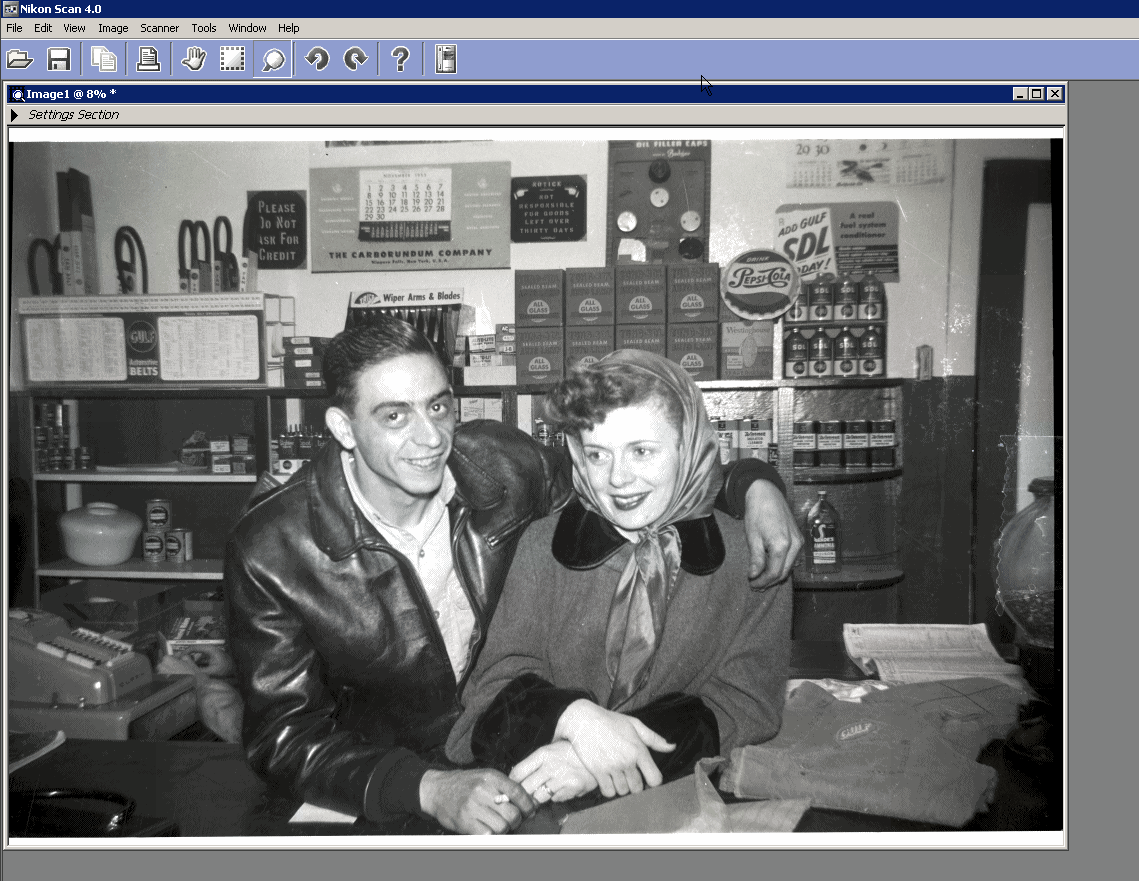Kelvin Smith Library
1. Turn on the Nikon Super CoolScan 9000. Firmly press the power button and hold for a few seconds. Green light will flash before turning solid.
2. Check out the appropriate film holder from Service Center's front desk.
3. To open the medium format holder, lift the tabs on both sides:



4. Place film into the holder emulsion side down. Make sure the film is at the very edge of the holder with no gap. Otherwise, your entire film may not be scanning in one image. Make sure the tab(s) "snap" back into place.

5. Insert the negative with its top up into the Nikon scanner (the scanner will automatically draw it in). An arrow on the holder indicated the correct direction to insert.
6. Open Adobe Nikon Scan, located in the Scanners Folder on the desktop.

7. The scanner should connect automatically; if not, try to restart the program or contact freedman center staff.
8. Locate the option bar drop-down menus on the left side of the Nikon scanner window. Select from the film type options menu (middle bar) the appropriate film setting: negative(mono). If you are scanning color film, please refer to HERE.

9. On the lefthand side of the Nikon interface (located at the top of the Nikon Scan 4.0 window between the settings and the preview pane) click on the vertical bar to unwind the thumbnail dialog box.

10. If the Tool Palette 1 bow is not already up, click the purple Tools button -> Tool Palette 1 to bring it up.


11. Click the film desired and push the green Scan button to scan the selected frame.

12. Once all of the desired frames have been scanned, click the Eject Film button in the upper left corner of the Nikon scanning window or use the eject button on the machine, located beneath the power button. Close the Nikon SUPER COOLSCAN 9000 window.

13. Make any adjustment necessary and save the image as a JPEG file (*.jpg, *.jpeg, *.jpe)

14. Adobe Photoshop can now be used to edit and save the image(s) as desired. For further instruction, see Basic Image Manipulation in Adobe Photoshop.